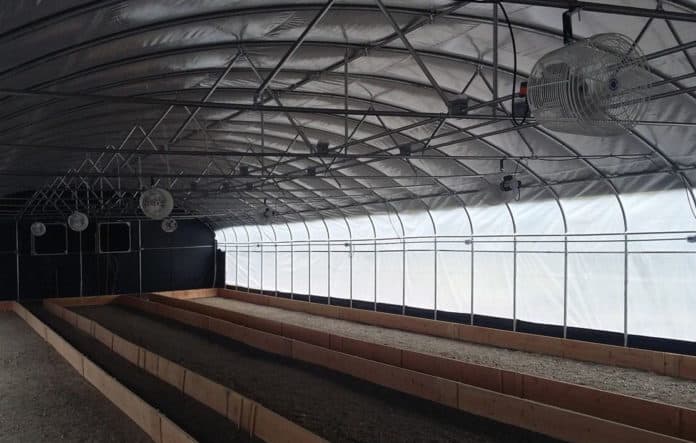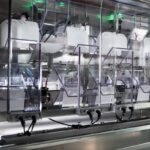It’s always interesting to watch growers in emerging markets learn from the mistakes and successes of growers in established markets. Two of the biggest takeaways I’ve seen from established markets are 1) what once worked on a smaller-scale, underground market doesn’t translate to commercial profitability, and 2) as new markets develop, one of the biggest determining factors of an operation’s success is the ability to get high-quality product into the market quickly.
Of course, operations that want to integrate commercial techniques and quickly get their product into the market will have to spend their initial capital in the right ways early on. For many, this is an unfortunate truth, but we’ve seen time and again operations that fail to use their initial capital wisely are less likely to succeed. The bottom line is this: If you can’t provide a product at the lowest possible cost, you’re most likely done.
Setting up a commercial production facility quickly no doubt will be costly, but there are ways to spend wisely and save money up front without jeopardizing success. One of the more progressive and forward-thinking approaches I’ve heard was part of a recent conversation with Will Kacheris about serving budget-conscious growers in new markets. Kacheris is a commercial greenhouse specialist for GrowSpan Greenhouse Structures, and I’ve quoted him in a number of articles for mg Magazine because of his unique insight into the industry and ability to apply sound agricultural principles that promote profitability to pretty much any cannabis operation.
With regard to cutting costs in an effective manner, he said, “Light-deprivation systems are not critical to day-one operations. We can come in later and add the systems, so growers can initially save money and get a steady flow of cash coming in and then add the system after a couple of turns.”
It’s an interesting thought. Obviously, it only applies to greenhouse growers, but at this point there’s abundant evidence greenhouses are a viable option for many growers. A greenhouse ensures complete environmental control and lets cultivators take advantage of natural lighting and passive ventilation, so operations can limit their operating costs.
Before we dig deeper into this idea, it’s important to stress this tactic would be functional only in a new market. In a saturated market like California or Colorado, operations absolutely must maximize their turns and, most importantly, reach the lowest possible operating cost. In new markets, opting to add a blackout system later allows cultivators to establish a commercial grow at a lower cost and get product into the market quickly.
I have to admit I was skeptical about this idea. In my mind, a greenhouse paired with an automated light-deprivation system is a duo on par with chicken and dumplings or Simon and Garfunkel. They work so seamlessly together, and both are essential to achieving the lowest possible operating cost. Once Kacheris explained his concept in a little more detail, though, I realized this could be an exceptional way for operations to save on up-front costs.
Lengthening the light cycle never will be an issue for greenhouse grows. Whereas indoor growers must spend to provide crops with light, greenhouses can take advantage of natural light during the day, ensuring energy savings. To lengthen the light cycle, growers simply must string bulbs around their vegetative areas to make sure the crops don’t begin to flower, but without a doubt, compared to an indoor grow, this is the most cost-effective way to proceed.
As Kacheris pointed out, “Many commercial growers use this method for crops beyond cannabis to keep plants ready for market before blooming.”
Shortening the light cycle and tricking the plants into thinking it’s time to flower will be a little more time-consuming and require workers to pull tarps. This is why waiting a few turns to integrate an automated system should be used only by those who are tight on up-front money and looking to get to market quickly. The labor required to pull tarps is one an operation can endure, but doesn’t have to endure, and it’s a cost that will be a hindrance once more players enter the market.
After a couple crop cycles, operations should have an inflow of cash and invest it back into the business in the form of an automated light-deprivation system. The great thing about these systems is, when they are integrated properly, operations should have no problem earning back their money. A reasonable return-on-investment timeline is within one to two growing cycles, and in my mind this is exactly why it is beneficial to add an automated system at some point.
An automated light-dep system instantly reduces labor requirements. Instead of paying to have tarps pulled, blackout material can be deployed automatically, as necessary. This guarantees blackout conditions won’t be slowed down by poor weather or absent employees. The systems create a more stable growing environment, and besides cutting labor costs they also can provide energy savings by helping to retain heat during the night. They really are an essential system for operations that want to maximize profitability but need to bypass a few crop cycles in order to rush product into the market.
I hear your question: How easy is it to add a light-dep system after the fact?
It’s not an issue at all, actually.
“If the same engineers who design the greenhouse design the blackout system, they can perfectly integrate for future expansion,” explained Kacheris.
While it’s not the ideal way to enter the industry, adding a light-deprivation system after a few turns is the perfect way for budget-conscious operations in emerging markets to create a commercial production and get their product to market quickly.
Christopher Machnich is a digital marketing manager for GrowSpan Greenhouse Structures. He is a cannabis industry enthusiast who focuses on greenhouse and hydroponic production, as well as the cultural and economic impact of cannabis legislation.










